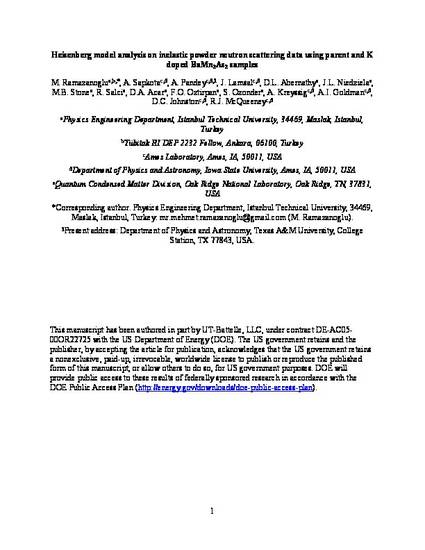
Low temperature powder inelastic neutron scattering measurements were performed on three different powder samples; parent BaMn2As2,12.5% K-doped Ba0.875K0.125Mn2As2 and 25% K-doped Ba(0.75)K0.25Mn2As2. The Heisenberg Model involving J1‐J2‐Jz coupling constants were compared to the data by a powder integration routine using Monte Carlo integration methods. The best magnetic parameters were selected using a chi-square test where model intensities were compared to the full (q,E) dependence of magnetic scattering. A key step to this analysis is the characterization of the background which is formed mostly by phonon scattering intensities along with other sources including the magnetic impurity scattering events. The calculated powder magnetic intensities added to the estimated background obtained from the non-magnetic high momentum transfer region. The agreement between the simulated and the raw data enabled us to perform quantitative analysis of the unreacted MnO impurities. Overall, this is another confirmation along with earlier studies using this technique, that magnetic exchange constants can be calculated within an acceptable range with a very quick inelastic neutron powder experiment without need for a single crystal sample.
Available at: http://works.bepress.com/ai-goldman/47/